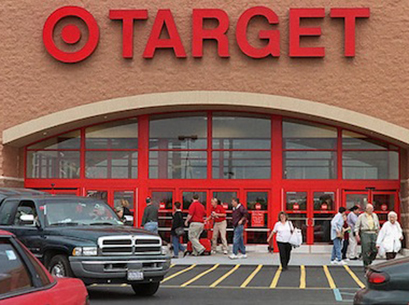 Speaking at the NRF Big Show in New York last week, Mike McNamara, executive vice president and chief information and digital officer of Target in the US said that Amazon play against a different set of financial rules after managing “to convince the investor community that was the right thing to do”.
Speaking at the NRF Big Show in New York last week, Mike McNamara, executive vice president and chief information and digital officer of Target in the US said that Amazon play against a different set of financial rules after managing “to convince the investor community that was the right thing to do”.
But there are a few strategic advantages for traditional bricks-and-mortar retailers that might give a few household Aussie names food for thought.
“Amazon is spending a lot of money to build a fulfilment network to get close to major populations,” he said. “Target already has that. We have 1800 stores that are hovering within five to ten miles of 95 per cent of the population.”
Over the last holiday period, 40 per cent of Target’s online trade came from its stores, as a lot of its shipment comes from its stores – similarly seen by local retailers like Myer who book a glut of online sales from within bricks and mortar locations.
“We have a lead time advantage and potentially have a cost advantage over Amazon because our last leg is shorter, but there’s no doubt that they’re fierce and were going to have to fight hard,” said McNamara.
Since joining the second-largest discount department store retailer in the US as its head of technology – not long after the company was hit by a cyber security attack that saw hackers steal data from up to 40 million debit and credit cards of shoppers – McNamara has overseen a raft of changes at the company. He’s ruffled a few feathers in the process.
Doing less with more
At McNamara’s first board of directors meeting, after discussing the importance of technology in retail, one of the non-executive directors asked him what was needed for success at the company.
“What I told him was I needed less money and fewer people. Now I didn’t say that in the sense of trying to reduce technology costs nor any overriding sense of financial prudence. What was going through my mind was actually, how do you create more value for the company?”
According to McNamara, the problem with having too many people and too much money is that you end up doing “a whole lot of stuff” that doesn’t really matter and then the things that really do matter get lost.
“At that time, we were running over 800 technology projects. Now Target’s a big company, but no company, no matter how big, has 800 priorities. I’ve always taken the view that I want to do fewer, bigger things and just do them better,” he explained.

A focus on ‘ruthless prioritisation’, developing an in-house engineering team and adopting agility within the way of working has underpinned the new digital Target. Batting away an “oversized budget by literally hundreds of millions of dollars, way too many people and priorities” were first hurdles in turning Target from a digital laggard into leader.
“When I started at Target…we had almost 10,000 people and 7000 were third party contractors,” he said. “Our priorities had been set by merchants and marketeers and our architecture was being written by a multitude of third parties and that’s something that I wanted to change quickly.”
The ratio is now completely reversed for the US retail giant, with 70 per cent of engineering now in-house.
“We’ve achieved a huge reduction in the workforce, our productivity has skyrocketed and our overheads have tumbled, allowing us to make leading investment in our infrastructure and in our business. Crucially, it’s brought business decisionmaking back where it belongs and that’s in-house.”
Up until about five or six years ago, Target was being run on a platform of one of its fiercest rivals, which also happened to have a web service as a business beginning with A.
Access exclusive analysis, locked news and reports with Inside Retail Weekly. Subscribe today and get our premium print publication delivered to your door every week.





